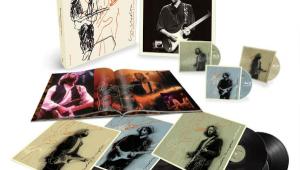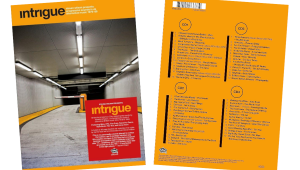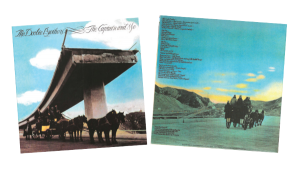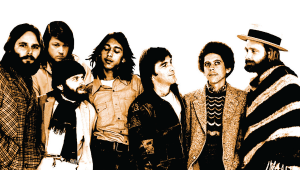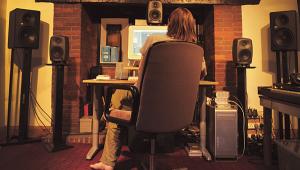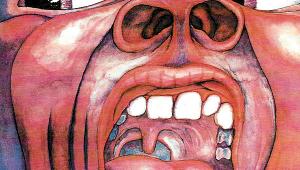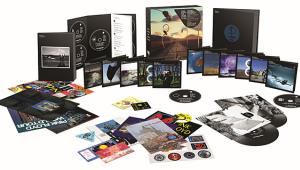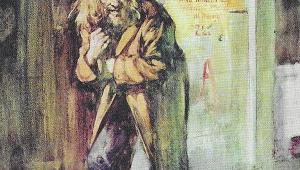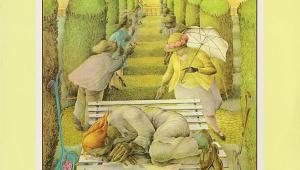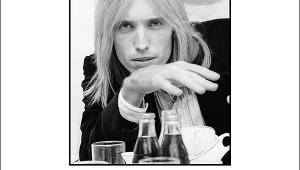Steven Wilson: Juke Box Jury of One
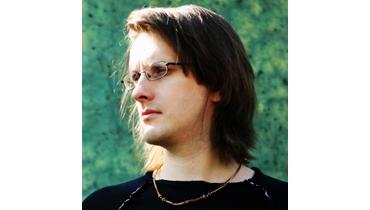
Sure, you know that Elliot Scheiner, Frank Filipetti, and other producer/engineers are fans of surround sound. But among artists, you'll find no bigger champion of multichannel music than Porcupine Tree's Steven Wilson.
After learning the craft and art of surround mixing while watching Scheiner at work on PT's In Absentia (2002) and Deadwing (2005; see earlier interview), Wilson went on to mix by himself the band's current album, Fear of a Blank Planet (2007). He then turned to making surround versions of some back-catalog titles, including Stupid Dream (1999) and the just-reissued Lightbulb Sun (2000).
When Wilson stopped by our offices recently, one of the things we were curious about was his opinion on other people's multichannel mixes. So we grabbed a few surround releases, took Wilson up to our listening room, and encouraged him to speak freely on what he heard. He didn't disappoint.
 |
The Beatles: "Ticket to Ride" First: Anthology DVD-Video (surround mix by Peter Cobbin) Second: Help! (movie) DVD-Video (Guy Massey)
Wilson:Help! is a hundred times better.
After overlimiting, reverb is probably the most abused way you can process music. Forget about surround sound for a moment; this even happens when I get stereo demos from bands. Sure, when you have an isolated sound and you put it through reverb, it's glorious. You can take a guitar, a voice, or a drum and put it through a full reverb, and it sounds amazing. But as you cumulatively add elements to a mix, the reverb actually starts to have this negative effect. It takes away all of the character, all of the definition.
The guy who did the Anthology version of "Ticket to Ride" obviously thought that the way to create a nice surround spectrum was to add lots of reverb. And actually, before I started to do my own surround mixes, I thought that that would be the way to do it, too. I thought, "Great, we're going to get these special reverbs with multiple reflections." But now, I don't think that's the way to go at all.
With the Help! mix, you could almost forget that you were listening to surround. It just had a more immersive effect. You could still pick out things, but overall the mix had a very organic quality. The other mix had a slightly more synthesized, plastic quality. The new mix is more spread out, but not in a way that it's bashing you over the head with it.
The one question I do have on the new mix is about putting the vocals in the center channel. For me, the jury is still out on using the center that way. I mean, I've done it, but when I put my lead vocals in the center speaker, I also put a little bit of them in the left and right front. I'm not sure how authentic it sounds to focus the vocals exclusively in the center.
When I mixed our live DVD [Arriving Somewhere . . . ], it certainly sounded completely wrong to do it that way. There was no way you could possibly create a realistic spectrum for a live performance in that manner. With a concert, you're hearing reflections from every surface of every wall and the ceiling; you're hearing every sound from every corner, in some form or another. So to just have the vocals in the center speaker, for me, was completely wrong. And I actually didn't put them in the center at all for that DVD.
With a studio recording, obviously, you can create different perspectives that don't necessarily have to be faithful to a performing band. But still, in the case of "Ticket to Ride" on Help!, it sounds slightly odd to me having not only the lead vocals but the harmonies in the center. There's something slightly detached about it.
The Beatles: "Help!" First: Love DVD-Audio (Paul Hicks) Second: Help! (movie) DVD-Video (Guy Massey)
Wilson:Wow! The movie mix is much better. In the Love mix, it sounded like everything was coming out of the center speaker. It was very flat. It felt like the surround in the four corners was giving me just slight gimmicks. Whereas the new mix was immersive.
That's the whole thing: Do you use surround sound as a kind of gimmick, or do you use it to try to create a more naturalistic, immersive sound field? I mean, that was the whole thing originally with stereo. The early stereo mixes were, "Let's throw all the instruments in one speaker and all the vocals in the other speaker" - to try to create something sensational. And then gradually, as stereo developed, people realized that actually it was more about creating a three-dimensional sound field. You don't move things around; you don't make it obvious that some things are just in one speaker and some things are just in the other.
The new mix felt like we were inside the music.

